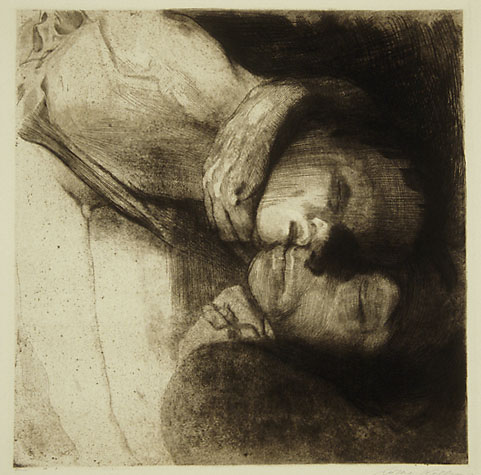| ||
|
Käthe Kollwitz German, 1867-1945 Tod, Frau, und Kind
Museum purchase Like Nietzsche, Schopenhauer, Novalis, Wagner, or Max Klinger, Kollwitz did sometimes seem to have a mystical yearning for the transcendent murkiness of death. But this romanticism was validly toned by her outrage at the murderousness of our century and her cry that, "There has been enough dying...Seed for the planting shall not be ground up." This image, perhaps an Oedipal/prophetic obsession with her, seems to predict the death of one of her own sons in WWI. She repeated this motif many times, her own pieta, where she merges with death and her child; or perhaps she resists death. After her son's death, Kollwitz dreamt of holding the tiny infant in "my arms...and I had a feeling of great bliss as I thought I could go on always holding it in my arms." Her son died as a soldier, but her power as an artist granted her this vision. Is such a vision the power of woe or of life? |
